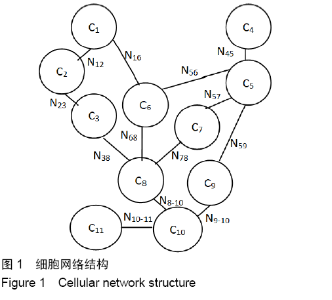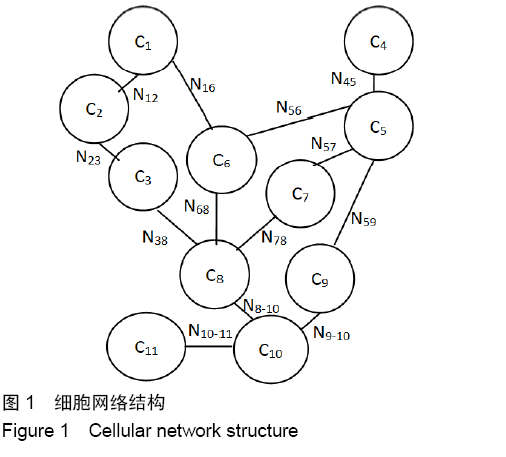[1] 张玮红.高级分子建模和模拟技术在细胞信号传导和通信的蛋白质结构预测的研究[J].世界最新医学信息文摘, 2015,15(46): 1-2.
[2] 张玮,彭澎,沈铿.外泌体来源RNA在细胞通讯中的作用[J].中国医学科学院学报,2016,38(4):480-483.
[3] 马丽娟,庞广昌,孙勇,等.基于细胞间的有向加权通信网络定量评价蛹虫草对人体的调节作用[J].食品科学,2016,37(1):150-156.
[4] 贾祥宇,吴禹. 动力学与生命科学的交叉研究进展综述[J].动力学与控制学报,2017,15(3):279-288.
[5] 耿读艳,谢红娟,万晓伟,等.基于DNA损伤的蛋白调控网络研究[J].物理学报,2014,63(1):018702.
[6] 单光宇,卢一鸣,屈武斌,等.肝细胞癌术后生存率相关分子在复杂网络中的拓扑特性研究[J].军事医学,2015,39(9):691-693.
[7] 王司仪,原铭贞,刘笑玎,等.细胞因子与肺纤维化相关性的研究进展[J].吉林大学学报(医学版),2014,40(6):1325-1329.
[8] 秦怀斌,郑瑶,梁斌.一种控制软件体系结构复杂性的方法[J].微电子学与计算机,2019,36(1):32-36.
[9] 武越歆,葛高翔.胞外基质研究进展[J].中国细胞生物学学报, 2019,41(3):415-422.
[10] THEOCHARIS AD, SKANDALIS SS, GIALELI C, et al. Extracellular matrix structure. Adv Drug Deliv Rev. 2016;97:4-27.
[11] 贾祥宇,吴禹.动力学与生命科学的交叉研究进展综述[J].动力学与控制学报,2017,15(3):279-288.
[12] SIETTOS CI, RUSSO L. Mathematical modeling of infectious disease dynamics. Virulence. 2013;4(4):295-306.
[13] WANG R, ZHU Y. Can the activities of the large scale cortical network be expressed by neural energy? A brief review. Cogn Neurodyn. 2016;10(1):1-5.
[14] WANG Z, WANG R. Energy distribution property and energy coding of a structural neural network. Front Comput Neurosci. 2014;8:14.
[15] QU J, WANG R, YAN C, et al. Oscillations and synchrony in a cortical neural network. Cogn Neurodyn. 2014;8(2):157-166.
[16] ZHANG Y, SMOLEN P, BAXTER DA, et al. Computational analyses of synergism in small molecular network motifs. PLoS Comput Biol. 2014;10(3):e1003524.
[17] 王琨娣,赵熙强,赵亚萍.对基于网络结构分析疾病敏感基因方法的改进[J].中国海洋大学学报,2017,47(10):150-154.
[18] PAUZAITE T, THACKER U, TOLLITT J, et al. Emerging Roles for Ciz1 in Cell Cycle Regulation and as a Driver of Tumorigenesis. Biomolecules. 2016;7(1): E1.
[19] 李晶,张奇,任雨冬,等.基于非参数正态图模型的差异网络分析——肝细胞癌生存时间枢纽基因的筛选[J].实用预防医学, 2019,26(4):404-408.
[20] ZHANG XF, OU-YANG L, YAN H. Incorporating prior information into differential network analysis using non-paranormal graphical models. Bioinformatics. 2017; 33(16):2436-2445.
[21] WONG YH, WU CC, LIN CL, et al. Applying NGS Data to Find Evolutionary Network Biomarkers from the Early and Late Stages of Hepatocellular Carcinoma. Biomed Res Int. 2015; 2015:391475.
[22] ZHANG L, LE LU, NOGUES I, et al. DeepPap: Deep Convolutional Networks for Cervical Cell Classification. IEEE J Biomed Health Inform. 2017;21(6):1633-1643.
[23] STEFANO G, RENNA L, LAI Y, et al. ER network homeostasis is critical for plant endosome streaming and endocytosis. Cell Discov. 2015;1:15033.
[24] 廖欣,郑欣,邹娟,等.基于神经网络集成模型的宫颈细胞病理计算机辅助诊断方法[J].液晶与显示,2018,33(4):347-356.
[25] 颜冰,胡俊杰.内质网相关细胞器互作的研究进展[J].中国细胞生物学学报,2019,41(2):175-184.
[26] 黎英,黄文聪.网络医学的架构及其研究进展[J].中国组织工程研究,2017,21(12):1959-1968.
[27] 蒋峰,陈玉根.维持Cajal间质细胞网络机制的研究进展[J].江苏医药,2017,43(18):1338-1341.
[28] 满梦华,张娅,蔡娜,等.细胞信号网络功能鲁棒的简并性拓扑特征[J].生物信息学,2015,13(1):40-46.
[29] 赵飞,陈旭义,张西正.中枢神经发育中的力学-生物学响应与网络形成[J].医用生物力学,2018,33(5):471-476.
[30] 张宝月,郑一夫,庞晓丛,等.中药抗肿瘤作用的物质基础与网络机制研究[J].世界中医药,2018,13(8):1997-2009.
[31] CHEN HI, WOLF JA, SMITH DH. Multichannel activity propagation across an engineered axon network. J Neural Eng. 2017;14(2):026016.
[32] QI Q, LI R, LI HY, et al. Identification of the anti-tumor activity and mechanisms of nuciferine through a network pharmacology approach. Acta Pharmacol Sin. 2016;37(7): 963-972.
|

